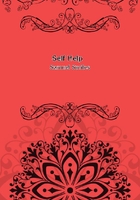
第70章
Feeling hampered by his ignorance of the art of reading, and eager to master the contents of Burnet's book, he ceased attending the drawing class at the Institute after the first quarter, and devoted himself to learning reading and writing at home. In this he soon succeeded; and when he again entered the Institute and took out 'Burnet' a second time, he was not only able to read it, but to make written extracts for further use. So ardently did he study the volume, that he used to rise at four o'clock in the morning to read it and copy out passages; after which he went to the foundry at six, worked until six and sometimes eight in the evening; and returned home to enter with fresh zest upon the study of Burnet, which he continued often until a late hour. Parts of his nights were also occupied in drawing and making copies of drawings. On one of these - a copy of Leonardo da Vinci's "Last Supper" - he spent an entire night. He went to bed indeed, but his mind was so engrossed with the subject that he could not sleep, and rose again to resume his pencil.
He next proceeded to try his hand at painting in oil, for which purpose he procured some canvas from a draper, stretched it on a frame, coated it over with white lead, and began painting on it with colours bought from a house-painter. But his work proved a total failure; for the canvas was rough and knotty, and the paint would not dry. In his extremity he applied to his old teacher, the barber, from whom he first learnt that prepared canvas was to be had, and that there were colours and varnishes made for the special purpose of oil-painting. As soon therefore, as his means would allow, he bought a small stock of the necessary articles and began afresh, - his amateur master showing him how to paint; and the pupil succeeded so well that he excelled the master's copy. His first picture was a copy from an engraving called "Sheep-shearing,"and was afterwards sold by him for half-a-crown. Aided by a shilling Guide to Oil-painting, he went on working at his leisure hours, and gradually acquired a better knowledge of his materials.
He made his own easel and palette, palette-knife, and paint-chest;he bought his paint, brushes, and canvas, as he could raise the money by working over-time. This was the slender fund which his parents consented to allow him for the purpose; the burden of supporting a very large family precluding them from doing more.
Often he would walk to Manchester and back in the evenings to buy two or three shillings' worth of paint and canvas, returning almost at midnight, after his eighteen miles' walk, sometimes wet through and completely exhausted, but borne up throughout by his inexhaustible hope and invincible determination. The further progress of the self-taught artist is best narrated in his own words, as communicated by him in a letter to the author:-"The next pictures I painted," he says, "were a Landscape by Moonlight, a Fruitpiece, and one or two others; after which Iconceived the idea of painting 'The Forge.' I had for some time thought about it, but had not attempted to embody the conception in a drawing. I now, however, made a sketch of the subject upon paper, and then proceeded to paint it on canvas. The picture simply represents the interior of a large workshop such as I have been accustomed to work in, although not of any particular shop.